From lighthouses to listed lodges and from farmhouses to fisherman’s dwellings, the National Trust has one of the most distinctive collections of holiday cottages in the country
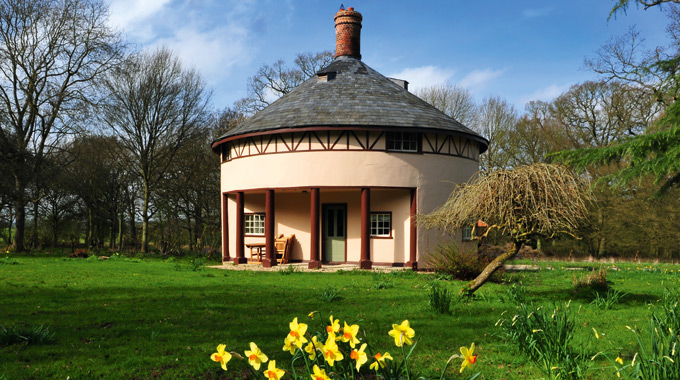
The British countryside is as varied in its architectural and historical structures as it is in its flora and fauna. Our built landscape is shaped by unusual and rare dwellings, from Victorian lighthouses to medieval banqueting halls. The National Trust own and operate a collection of nearly 400 of these properties as holiday cottages, providing a rare opportunity to stay in some of the country’s best buildings.
With its unusual shape and fascinating history, The Round House in Suffolk was built with entertainment in mind and is as pleasing in appearance today as when it was built. It was first used as a shooting lodge and then a gamekeeper’s cottage. The house has an unusual central ‘rotunda’, which was built by the 4th Earl of Bristol to show off priceless treasures collected on his tours of Europe in the 18th century.
Set within 1,800 acres of stunning parkland, woodland walks start at the cottage door and two village pubs are within a mile’s stroll, in Horringer. The grounds have wonderful secluded lakes, a walled kitchen garden and a vineyard. The Round House itself, which is approached through these grounds via a winding tree-lined track, is set in an enchanting woodland glade. It has been restored to its original appearance using the National Trust’s archived information. Its quaint and compact exterior hides a deceptively large interior, which has been modernised to provide comfortable and quality living areas.
Located in Ickworth, the cottage (which sleeps six) is a great base for exploring the stylish Georgian town of Bury St Edmunds. A little further away, Ickworth House provides a wonderful insight into the lavish and outrageous eccentricity of that period and cottage guests have free entry to Ickworth during their stay. The nearby towns of Aldeburgh and Southwold are also within easy reach and well worth visiting.
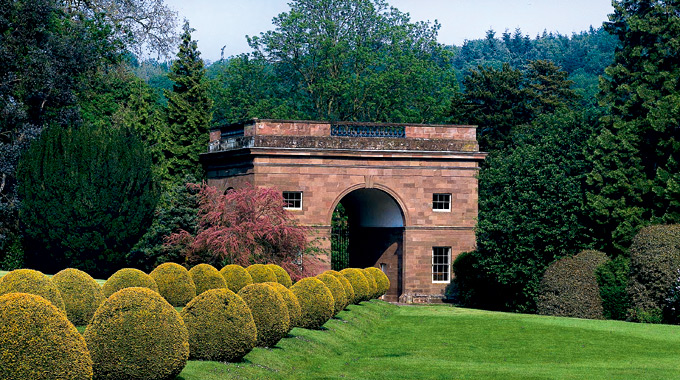
For something really unusual, then look no further than the Triumphal Arch at Berrington Hall country house in Herefordshire. The cottage, which sleeps four, is in one half of the entrance archway designed by Henry Holland, who also designed the main house. The Triumphal Arch was formerly the coachman’s home, but more recently it was used as a shooting lodge. It has splendid sweeping views across the wide valley, the Brecon Beacons and Berrington Hall’s grounds and gardens.
The cottage also has its own private garden and guests have access to Berrington Hall’s house, gardens and parkland when the house is closed to the public – a rare opportunity.
Though it has a slightly austere exterior, Berrington Hall has delicate interiors and a welcoming feel, which is mirrored in the cosy interiors of the holiday cottage. And although you may not want to leave the comfort of Triumphal Arch to visit the seemingly unwelcoming main house, the interior of Berrington Hall is a must-see with its Biagio Rebecca ceilings and fine period furniture.
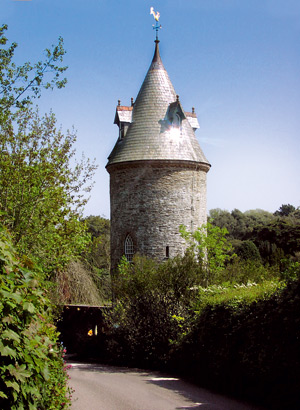
Set on the Trelissick Estate in Cornwall, the Water Tower is Trelissick’s icon, and it’s about as distinctive a holiday cottage as you could wish for. Four stories high but with only one room on each floor, the Water Tower, which sleeps two, has 50 internal steps, which curl up and around the narrow spiral staircase, pausing only to let you enter each circular room. It was built in about 1865 as a reservoir for Trelissick House, with the height of the tower ensuring a good head of water for fighting fires. The utilitarian building, designed with style and unexpected embellishments, is typically Victorian. The Water Tower shares a private garden with Engine House, away from the bustle of the popular estate.
The panoramic views from Trelissick down the estuary to the open sea are spectacular. There’s a three-mile circular walk around the estate, which takes you through beech and oak woods to the shores of the Fal, through open parkland and sequestered creeks. Cottage guests have free access to Trelissick Garden and two free tickets to any Garden events and drama productions during their stay.
On the sweeping road, clinging to the rugged coast between the rivers Tyne and Wear, the dramatic red and white tower of the now non-operational Souter (pronounced suitor) Lighthouse stands proud. Lighthouse Keeper’s Cottages are part of a complex of buildings attached to the lighthouse. They overlook two-and-a-half miles of spectacular coastline owned by the National Trust.

The lighthouse is located on Lizard Point at Marsden, but takes its name from Souter Point, which is located a mile to the south. Designed by the prolific lighthouse builder and designer James Douglas, the lighthouse, which opened in 1871, was built to warn ships of the dangerous reefs directly under the water in the surrounding area. Cottage guests can have a free guided tour of the lighthouse during opening times by arrangement. Guests also have free access to nearby Washington Old Hall and Ormesby Hall.

The next cottage is worth visiting for its name alone. Mustard Pot Cottage is a hidden gem in the heart of Norfolk and an ideal hideaway for two. Guests drive between the gate houses at the entrance to Felbrigg Hall and then down a woodland track to arrive at the Mustard Pot. Standing in its own fenced garden, the cottage has been added to over the years, which has only enhanced the charm and character of the pretty dwelling, with its octagonal-shaped sitting room and bedroom above. There is direct access from the cottage to woodland on the Felbrigg Estate, and the beaches and seaside towns of Cromer and Sheringham are just a few minutes’ drive away.
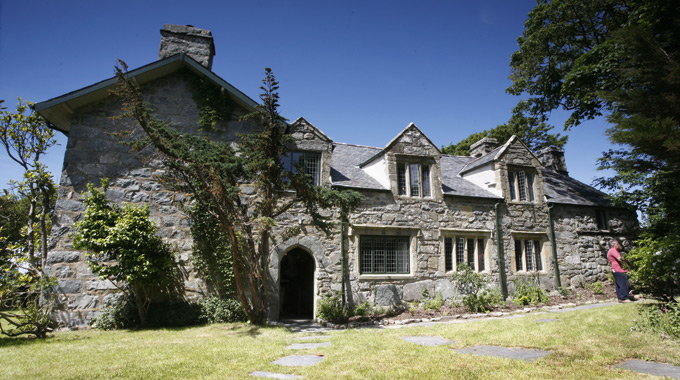
Egryn is a working farm, through which there is a public footpath that leads to the coast and to the uplands of the Rhinogydd Range. With its grand medieval hall, sitting and dining rooms, Victorian parlour, skilled craftsmanship, beautiful furnishings and large private garden, Egryn is the perfect choice for a special family holiday.
Click here to subscribe!

Related articles




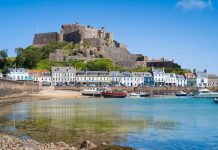

 © 2024
© 2024